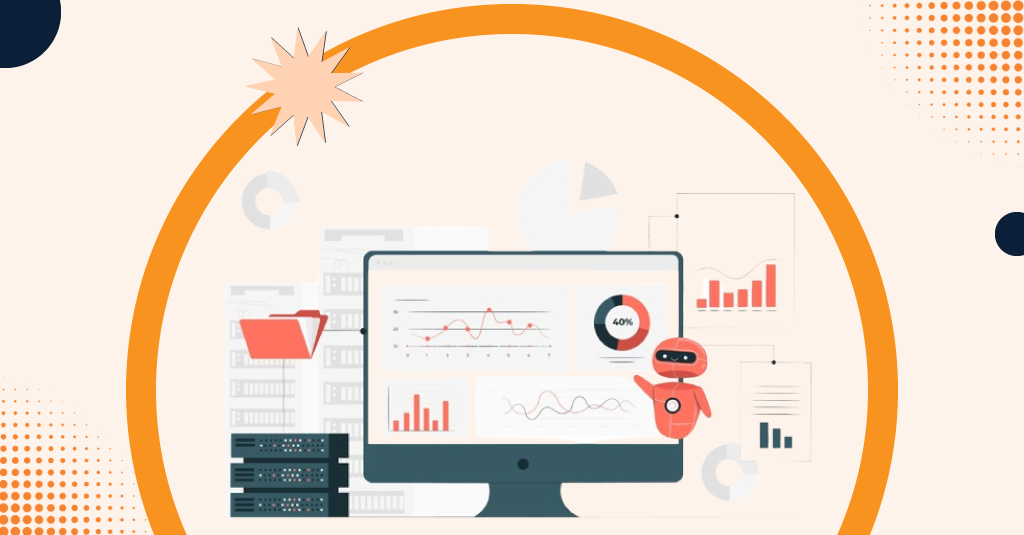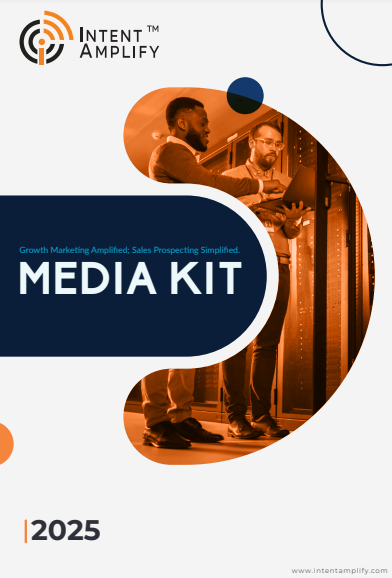
What Is Buyer Intent Data for B2B Marketing?
- Last updated on: June 24, 2025
New-age B2B marketing is not just about spreading a broad net. It’s about understanding when and why your leads are looking and grabbing them at that all-important time. That’s the strategic strength of buyer intent data.
By 2025, buyer intent data will be a cornerstone of revenue-driven marketing and sales. It provides real-time visibility into which organizations are studying solutions such as yours, what they are reading about, and when they are closing in on a purchase decision. This guide will discuss what buyer intent data is, why it’s more important than ever today, and how tools such as Intent Amplify transform these signals into pipeline success.
What Is Buyer Intent Data in B2B Marketing?
Buyer intent data refers to behavioral signals that indicate when a B2B company or decision-maker is actively researching a product or service. In 2025, B2B buyers don’t rely solely on vendor websites; they compare solutions across third-party platforms, analyst reviews, and content hubs.
These digital footprints reveal where a buyer is in their journey. Intent data aggregates such actions and interprets them as sales and marketing insights that they can act upon ahead of the competition. For instance, if a business is reading about “secure data lake architecture” on multiple sites, it is probably evaluating solutions within that category. Catching that signal early provides you with the chance to craft timely, relevant messaging directly responding to their interest.
Why Buyer Intent Data Is Essential in 2025’s B2B Landscape
As B2B buying processes go increasingly digital and self-directed, more than demographics or firmographics are needed by marketers to find buyers at the right moment. In 2025, 83% of a buyer’s decision-making takes place before they connect with a sales representative, reports Gartner.
This implies that traditional models of lead scoring based on gated content and email clicks are not cutting it. Buyer intent data bridges this gap by providing revenue teams a peek at genuine purchase research behavior, allowing them to diminish guesswork and wasted effort. Intent data-driven teams for ad targeting lowered cost-per-MQL by more than 27%, according to ZoomInfo’s 2025 Intent Benchmark Report.
Most Important Types of Buyer Intent Data: First-Party vs Third-Party vs Second-Party
Not all buyer intent data is created equal. Knowing their sources allows marketers to develop better targeting and outreach strategies. First-party intent data is gathered from your own site’s website visits, email opens, form completions, or product demo requests. It indicates a pre-existing interest in your company, but only holds those currently in your funnel.
Third-party intent data is gathered from activities on outside sites and content networks. The data is necessary for finding new accounts that have not yet interacted with your company but are investigating similar products. Second-party data is another company’s first-party data that’s shared under a partnership. Both are used in a holistic intent strategy.
First-party intent data informs you on how current prospects are interacting with your content, propelling known leads further along in the funnel. Third-party intent data illuminates unknown firms browsing similar topics on the web, critical for ABM and outbound prospecting.
How Buyer Intent Data Is Collected and Scored
Today’s intent platforms leverage a combination of machine learning, natural language processing, and behavior tracking to ingest and analyze millions of daily intent signals. These signals are run through to particular business subjects like “marketing automation,” “data loss prevention,” or “cloud spend optimization.” When a firm’s activity around one of these subjects surges above a set baseline, the system marks it as “in-market.” Frequency, recency, source credibility, and depth of engagement are used to assign scores. Intent Amplify, among other tools, uses signal triangulation and topic-level scoring to surface only vetted, buy-ready behaviors.
- Behavioral indicators are gathered from throughout websites, review sites, webinars, and content centers, then augmented with firmographic and persona information.
- An influx of content views or topic exploration usually indicates a greater probability of that account progressing to a purchasing phase shortly.
Common Pitfalls B2B Teams Face When Using Intent Data
While buyer intent data is a powerful tool, its value depends heavily on how it’s implemented. Many B2B teams rush to act on intent signals without validating the context or aligning with sales processes. This often leads to misprioritized outreach, false positives, and disillusioned sales reps. Others make the mistake of treating intent data as a plug-and-play solution when, in reality, it requires strategic integration with CRM systems, persona targeting, and content alignment. The key to success lies in operational discipline and consistent feedback loops between marketing and sales.
- Acting on raw, unfiltered intent signals can cause your team to waste resources chasing accounts that are not truly sales-ready or aligned with your ideal customer profile.
- Teams that fail to align intent insights with messaging, personas, and buying stages often lose credibility with prospects, reducing engagement rates despite the data-driven approach.
What Sets Intent Amplify’s Approach to Buyer Signals Apart?
Most other providers provide uninterpreted data, whereas Intent Amplify provides interpreted buyer intent intelligence. That is, we don’t simply tell you who has visited or clicked. We identify which businesses are actually researching, how actively they’re searching, and when they are about to make a decision. Our custom-built models eliminate weak or deceptive signals, leaving only the best opportunities for your sales team to pursue. Intent Amplify also maps this intelligence against buyer personas, industry-specific behavior, and revenue potential to provide B2B teams with a more strategic route to conversion.
- Our platform employs real-time scoring with multi-source validation to eliminate false positives and provide high-impact lead intelligence.
- Customers see 40% pipeline velocity acceleration and 2.3x outbound engagement increase when campaigns are powered by Intent Amplify insights.
FAQs
Q1. Is buyer intent data GDPR or CCPA compliant?
Yes, if it comes from platforms with consent-based data collection and anonymized firmographic signals. Intent Amplify is fully compliant in every jurisdiction.
Q2. Does buyer intent data foresee when a company will purchase?
It doesn’t with absolute certainty, but high-intent scores highly correlate with purchase readiness, particularly when monitored across multiple channels.
Q3. How does intent data differ from lead scoring?
Lead scoring generally relies on explicit engagement with your content, whereas intent data captures overall research activity across the web, sometimes even before a user comes to your site.
Q4. When should sales respond to intent signals?
Instantly. Buyer interest wanes quickly. Research indicates that sales teams who engage prospects within 48 hours of detecting intent experience a 65% increase in conversion.
Q5. Is intent data applicable for small or mid-market companies?
Yes. Intent data enables SMBs to efficiently prioritize outreach and go head-to-head with bigger companies by only reaching out to prospects that are actually in-market for their solutions.




